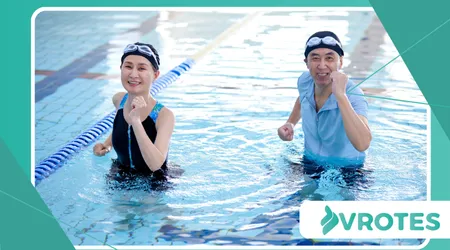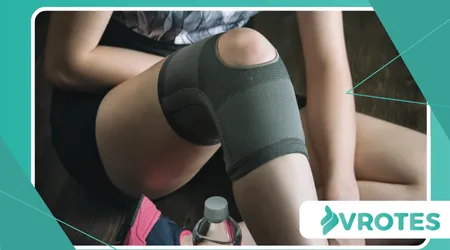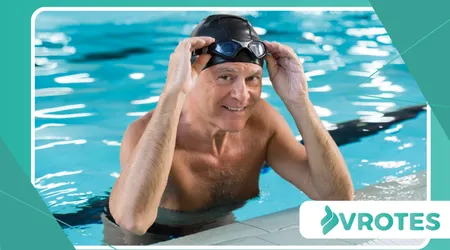Swimming Workouts for Cardio Without Knee Strain

Swimming workouts for cardio. The beauty of water is its remarkable ability to defy gravity. Imagine a world where your body feels lighter, more agile, and completely supported.
Anúncios
That’s the aquatic realm, a place where cardiovascular gains don’t come at the expense of your precious joints.
Forget the jarring impact of running or the relentless pounding of high-intensity interval training on dry land. The pool beckons with a gentler, yet equally effective, path to heart health.
The Low-Impact Marvel: Why Swimming Wins
Water’s buoyancy cradles your body, significantly reducing the strain on knees, hips, and spine.
This makes swimming an ideal choice for those with existing joint issues or anyone looking to prevent them. It’s a full-body workout that engages myriad muscle groups simultaneously.
Anúncios
Beyond joint protection, swimming offers a unique form of resistance. Every stroke, every kick, battles the water’s natural drag.
This constant, gentle opposition strengthens your muscles without the heavy loads associated with weightlifting.
Think of it as a moving embrace, a fluid challenge that builds endurance and power.
Your lungs work harder to deliver oxygen, your heart pumps more efficiently, and your cardiovascular system thrives. It’s an exercise that’s both demanding and profoundly therapeutic.
Crafting Your Cardio Masterpiece in the Pool
Structuring effective swimming workouts for cardio requires more than just aimless laps. Intentionality transforms a casual dip into a powerful fitness session.
Varying your strokes, pace, and intervals is key to maximizing benefits.
Consider starting with a warm-up, perhaps a few easy laps to get your muscles primed. Then, introduce a main set designed to elevate your heart rate.
Read here: Daily Stretching Flow to Combat Menopausal Stiffness
This could involve interval training, alternating between periods of high intensity and active recovery.
For example, swim a fast 50 meters, then a leisurely 50 meters. Repeat this sequence several times. This mimics the benefits of land-based HIIT without the impact.
Harnessing the Power of Different Strokes
Each stroke offers unique benefits and engages different muscle groups. Integrating a variety keeps your workout fresh and challenges your body in new ways.
Freestyle, with its continuous motion, is excellent for sustained cardio.
Breaststroke provides a strong leg workout and builds upper body strength. Backstroke opens up your chest and improves posture, while butterfly is a powerful full-body challenge.
Don’t be afraid to experiment and find what feels right for your body.
Even a simple kickboard can transform your workout. Focusing solely on leg propulsion strengthens your lower body and can elevate your heart rate dramatically.
Pull buoys, conversely, isolate your upper body, building arm and shoulder endurance.

The Art of Interval Training: Beyond Just Laps
Interval training in the pool is a game-changer for cardiovascular fitness. It pushes your limits, then allows for recovery, leading to significant gains in stamina.
A simple set might involve 100 meters at a challenging pace, followed by 30 seconds of rest.
Then, repeat this sequence for 8-10 repetitions. Adjust the distance and rest periods to match your current fitness level. As you get fitter, you can increase the distance or decrease the rest.
See how interesting: Chair Exercises for Flexibility and Joint Relief
Alternatively, try pyramid sets. Start with a shorter, faster interval, then progressively increase the distance and slow the pace, before decreasing the distance and increasing the pace again.
This keeps your body guessing and prevents plateaus.
Beyond the Strokes: Water-Based Drills for Enhanced Cardio
Swimming workouts for cardio aren’t limited to just traditional laps. Incorporating drills can add variety, improve technique, and boost your cardiovascular output.
Try treading water vigorously for extended periods.
This deceptively simple exercise can be incredibly challenging and effective for building endurance.
Water jogging or running, especially with a flotation belt, mimics the motion of land-based running without the impact.
You can also incorporate exercises like flutter kicks on the wall or vertical sculling, where you use your hands to propel yourself upwards.
These drills target specific muscle groups and can significantly contribute to your overall cardiovascular fitness.

Real-World Application: Two Examples to Get You Started
The Endurance Builder
Warm-up: 200 meters easy freestyle.
Main Set: 10 x 100 meters freestyle, focusing on consistent pace, with 30 seconds rest between each 100.
Cool-down: 100 meters easy backstroke.
This workout is designed to build your aerobic base and improve your sustained swimming speed. Focus on maintaining good form throughout.
++ Journaling Prompts to Understand Your Menopause Emotions
The Interval Powerhouse
Warm-up: 150 meters mixed strokes, easy pace.
Main Set: 8 rounds of: 50 meters maximum effort (any stroke), followed by 1 minute of active recovery (slow kick or gentle sculling).
Cool-down: 150 meters easy breaststroke.
This session targets your anaerobic system, improving your ability to sustain high-intensity efforts. Push yourself during the fast segments.
Dispelling Myths and Embracing the Science
It’s a common misconception that only high-impact activities truly build cardiovascular fitness. However, research consistently demonstrates the efficacy of low-impact exercises like swimming.
A study published in the Journal of Strength and Conditioning Research in 2016 highlighted that swimming can provide cardiovascular benefits comparable to running, without the associated joint stress
. This reinforces the idea that effective cardio doesn’t require pounding pavement.
Think of your cardiovascular system as a well-oiled machine. It doesn’t care whether the stress comes from impact or resistance.
t responds to the demand for oxygen and the consistent elevation of your heart rate. Swimming provides this demand in spades, and with remarkable efficiency.
Mind-Body Connection: The Serenity of the Pool
Beyond the physical benefits, swimming offers a unique mental escape. The rhythmic sound of strokes, the sensation of gliding through water, can be incredibly meditative.
It’s an opportunity to disconnect from the daily grind and focus solely on your breath and movement.
This mental clarity is as vital as the physical gains. Stress reduction and improved mood are often overlooked, yet profound, benefits of regular swimming.
It’s an exercise that nurtures both the body and the soul.
Isn’t it amazing how something so physically demanding can also be so incredibly calming? The water becomes a canvas for both your physical exertion and your mental reset.
Maximizing Your Aquatic Cardio Journey
Consistency, as with any fitness regimen, is paramount. Aim for at least three to four swimming workouts for cardio per week. Listen to your body and adjust your intensity as needed.
Some days you’ll feel stronger, others less so.
Don’t be afraid to incorporate swimming into a broader fitness routine. It can complement strength training or other low-impact activities.
The key is to find a rhythm that works for your lifestyle and keeps you motivated.
A simple yet effective way to track progress is by noting your average pace per 100 meters or the number of laps you can complete in a set time. Celebrate small victories, they add up.
Beyond the Pool: A Holistic Approach
While swimming is fantastic, a truly holistic approach to midlife fitness involves more. Nutrition, adequate sleep, and mindful movement outside the pool all play crucial roles.
Think of swimming as a cornerstone, not the entire edifice, of your well-being.
Your body is an intricate network; what you fuel it with and how you recover are just as important as your workouts. Hydration, in particular, remains critical, even though you’re surrounded by water.
Common Misconceptions and Smart Choices
One common myth is that swimming doesn’t build bone density as effectively as weight-bearing exercises.
While it’s true that swimming isn’t a weight-bearing activity in the traditional sense, the muscular resistance it provides still contributes to bone health. Furthermore, the overall health benefits of swimming far outweigh this minor distinction for most individuals.
For instance, consider a statistic: Globally, cardiovascular diseases remain the leading cause of death, accounting for approximately 18.6 million deaths annually.
Engaging in regular cardiovascular exercise like swimming can significantly reduce your risk factors.
Choosing the right swimwear and goggles is also important for comfort and performance. Invest in quality gear that fits well.
A poorly fitting suit can be a distraction, and foggy goggles are just plain annoying.
The Path Forward: Dive In!
So, are you ready to embrace the liberating power of the pool? The path to robust cardiovascular health, without the relentless strain on your knees, is clear.
Swimming workouts for cardio offer a unique blend of challenge, therapy, and pure enjoyment.
It’s an investment in your long-term well-being, a commitment to a healthier, more active midlife.
Dive in, explore the possibilities, and let the water become your partner in fitness. Your knees, and your heart, will thank you.
Here are the answers to your frequently asked questions about swimming:
Frequently Asked Questions
Do I need to be an experienced swimmer to start doing cardio in the pool?
No, absolutely not. You can start with the basics, like walking in the water or using a kickboard to focus on your legs. Many workouts can be adapted for beginners.
How often should I swim for cardiovascular benefits?
For most adults, it’s ideal to swim 3-5 times a week, with sessions lasting 30-60 minutes, depending on the intensity. Consistency is more important than sporadic, long sessions.
Does swimming really help with weight loss?
Yes, swimming is an excellent calorie-burning exercise and can be an effective tool for weight loss, especially when combined with a balanced diet.
The amount of calories burned depends on the intensity and duration of your workout.
Can I swim if I have shoulder or neck problems?
It depends on the severity of the issue. Low-impact swimming can be beneficial, but it’s crucial to consult a doctor or physical therapist before starting.
They can recommend modifications to your movements or other water exercises.
What’s the difference between swimming in a pool and in open water (ocean, lake)?
Pool swimming offers a controlled and safe environment, ideal for focused training.
Open water swimming adds challenges like currents, waves, water temperature, and navigation, making it more suitable for experienced swimmers or with supervision.
Is it true that swimming is a full-body workout?
Yes, swimming is one of the few exercises that activates almost all major muscle groups in the body, including your arms, legs, back, shoulders, and core, in addition to being an excellent cardiovascular exercise.
